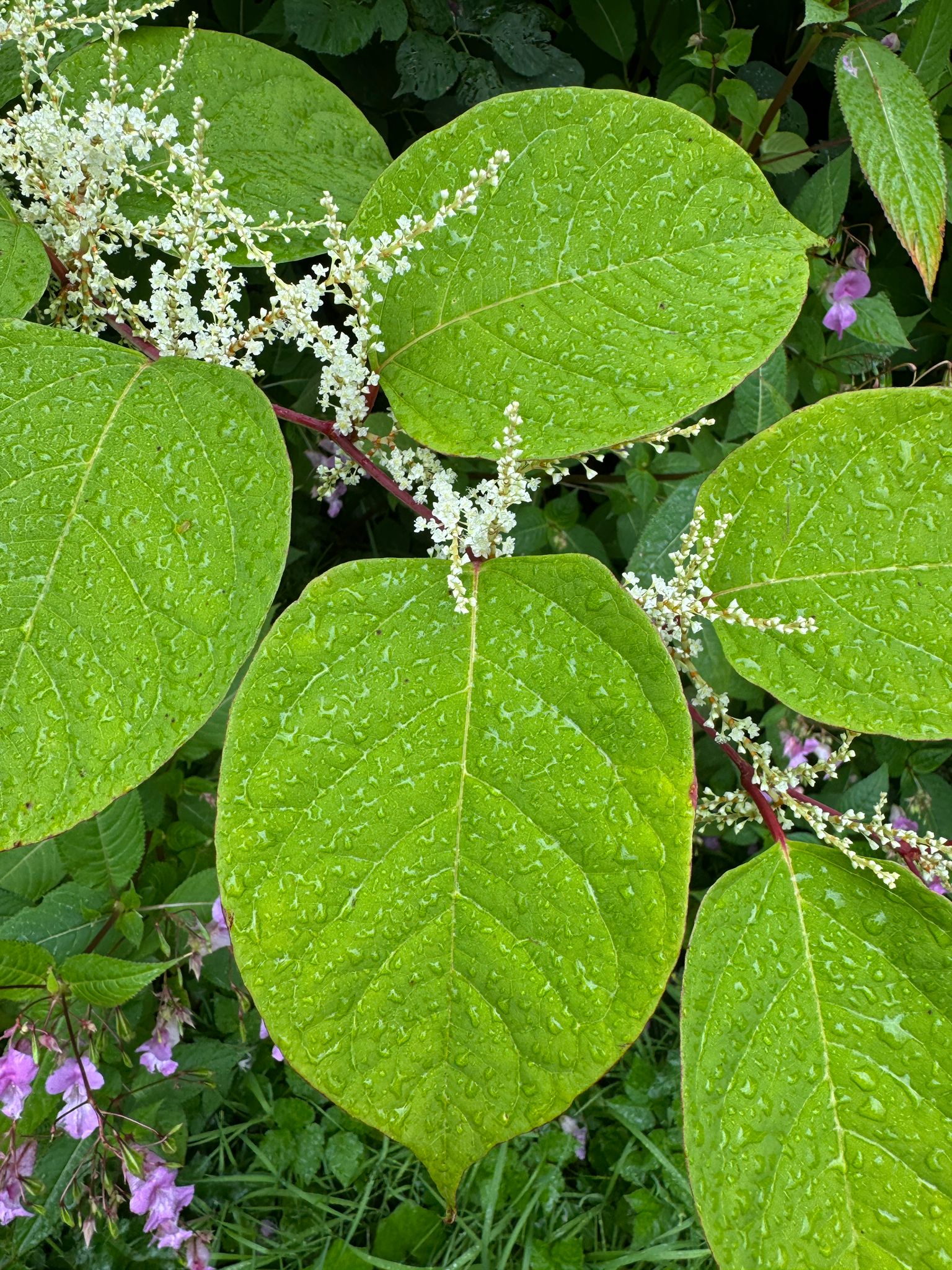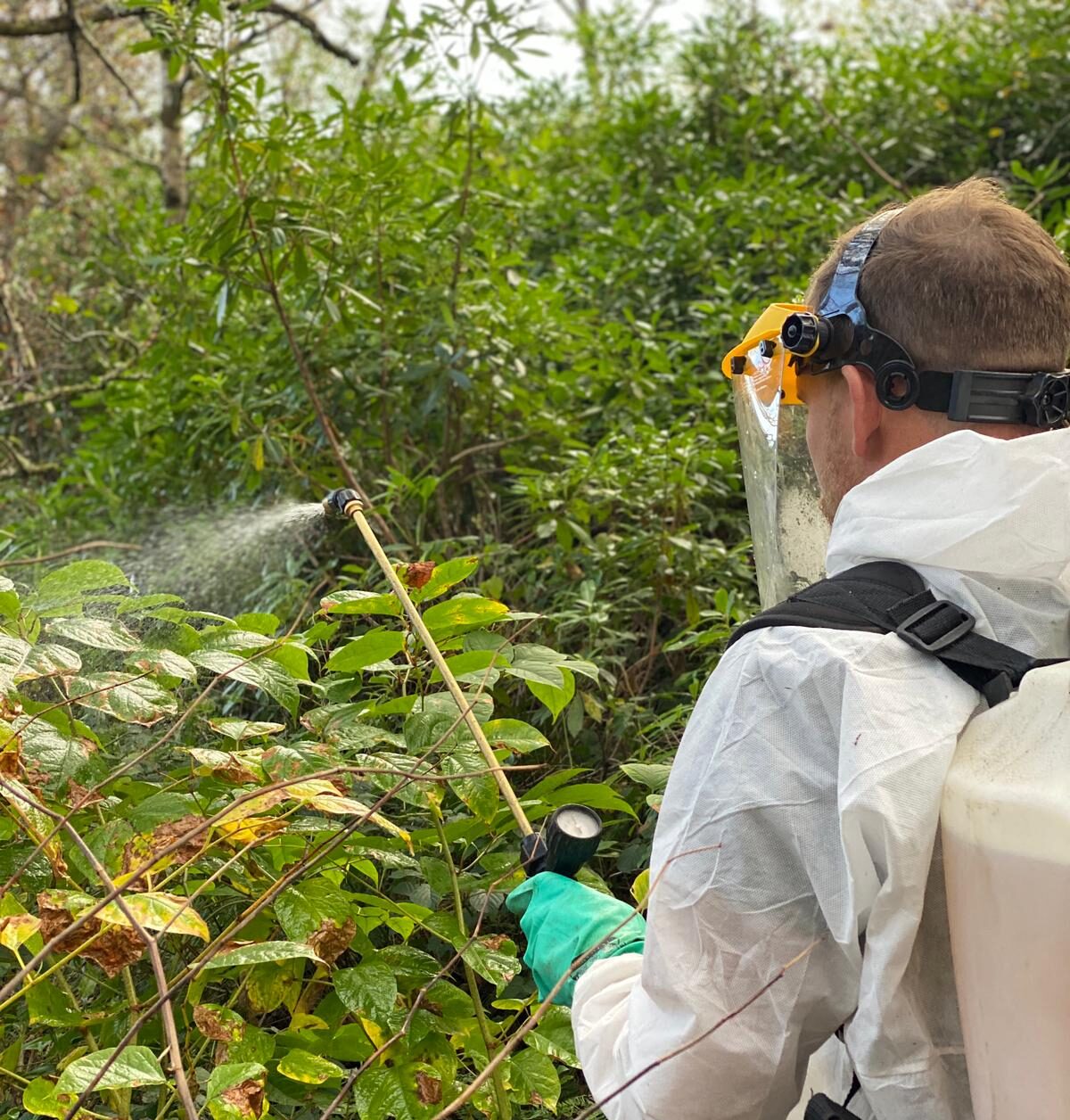Rhododendron Ponticum
Invasive Rhododendron Ponticum removal across Scotland. JBB tackles dense infestations on woodlands, riverbanks & developments.
What is Rhododendron Ponticum?
Rhododendron Ponticum is an invasive, fast-growing evergreen shrub or small tree known for its large, leathery leaves and striking purple blooms. Although visually attractive, this plant is far from harmless. It forms dense thickets that choke out native flora and disrupt natural ecosystems.
Originally introduced to the UK from the Iberian Peninsula and parts of Asia in the 18th century as an ornamental plant, Rhododendron Ponticum has since spread uncontrollably across Scotland. It thrives in acidic soils and shaded environments such as woodland areas, riverbanks, and even unmanaged public spaces. Its ability to dominate the landscape makes it a serious concern for landowners and developers alike.
How Does Rhododendron Ponticum Spread?
Rhododendron Ponticum spreads both by seed and vegetative means. It produces thousands of lightweight seeds annually, which are easily dispersed by wind and water. It also propagates through layering—when its low-hanging branches make contact with the soil, they root and form new plants.
Once established, it forms a dense canopy that blocks sunlight, preventing native plants from regenerating. Its leaf litter and root system release chemicals into the soil (allelopathy), further suppressing competing vegetation and creating a monoculture that significantly impacts biodiversity.
Issues Caused by Rhododendron Ponticum
Is Rhododendron Ponticum Harmful?
Yes, despite its ornamental appeal, Rhododendron Ponticum presents a number of serious ecological and practical concerns. Ecologically, it displaces native plant species and significantly reduces biodiversity by forming dense, light-blocking thickets. From a legal standpoint, its uncontrolled spread can lead to regulatory issues, particularly for landowners and developers.
The plant’s dry, woody structure and fallen leaf litter can also pose a fire risk, especially in unmanaged woodlands or areas prone to dry spells. In terms of land use, Rhododendron Ponticum has the potential to delay construction, public works, and land clearance projects due to the complexity of its removal and the need for compliance with invasive species regulations. Furthermore, it is toxic to livestock, especially cattle and sheep, making it a serious concern for rural and agricultural landowners.
Identification of Rhododendron Ponticum
Seasonal Growth Cycle
- Spring: Buds open into large clusters of purple flowers; new shoots begin to grow.
- Summer: Thick foliage continues to spread, forming dense coverage and shading out native species.
- Autumn: Flowering ceases, but seed production begins; mature leaves remain green.
- Winter: Evergreen foliage persists, although growth slows. Plant remains dominant even in low light and cold.
Detailed Rhododendron Ponticum Plant Characteristics
- Stems: Woody, brown stems that become gnarled with age; younger shoots are green and flexible.
- Leaves: Large, dark green, leathery leaves with a glossy upper surface.
- Flowers: Trumpet-shaped purple to lilac blooms that appear in clusters during spring.
- Seeds: Tiny and produced in large numbers; dispersed by wind.
- Roots: Shallow but wide-spreading root system, which supports vegetative regeneration.
What plants does it look similar to?
Rhododendron Ponticum can sometimes be confused with ornamental Rhododendron cultivars or other evergreen shrubs like Laurel. However, its invasive behaviour, flower colour, and leaf shape typically distinguish it from similar plants.
Are all rhododendrons invasive?
Not all rhododendrons are invasive. Many cultivated varieties are well-behaved and popular in gardens. Rhododendron Ponticum, however, is particularly aggressive in the wild and is listed as an invasive non-native species under UK law. It should be carefully managed or removed entirely.
Treatment and Control of Rhododendron Ponticum
How to Remove Rhododendron Ponticum Safely
Rhododendron Ponticum is a persistent and resilient species that is difficult to manage without professional support. At JBB Knotweed Solutions Ltd, we provide safe, compliant, and effective removal strategies tailored to your property or site needs.
Our experienced team delivers expert advice and management plans to help you remove this invasive species while minimising environmental disruption.
Our Treatment Methods
Herbicidal Treatment: Small plants may be treated with foliar application of specialist herbicides while well established bushes will require to be cut down and herbicide solution applied directly to the ends. Multiple treatments over several seasons may be necessary for full eradication.
Mechanical Removal: In some cases, excavation of root systems and physical removal is the best solution—particularly on development sites or where rapid clearance is required.
Book a Survey
We can tell you if you definitely have Rhododendron Ponticum on your property and recommend the best course of action.
More from JBB Knotweed Solutions



